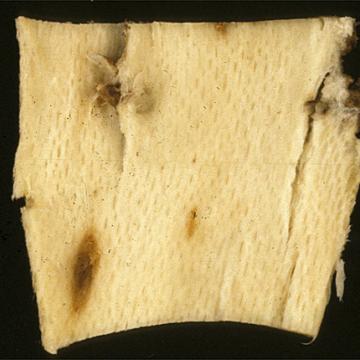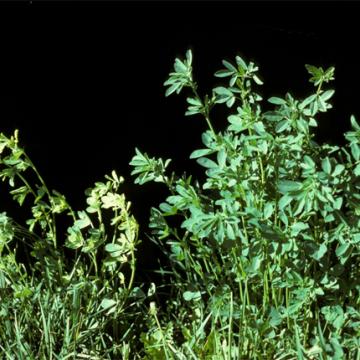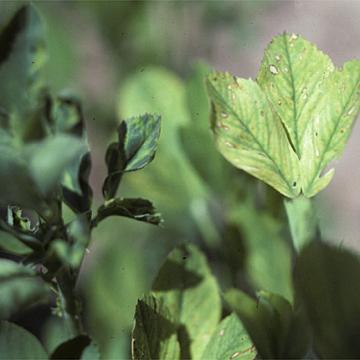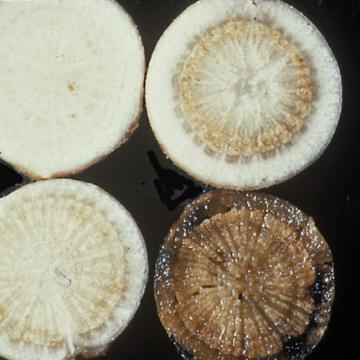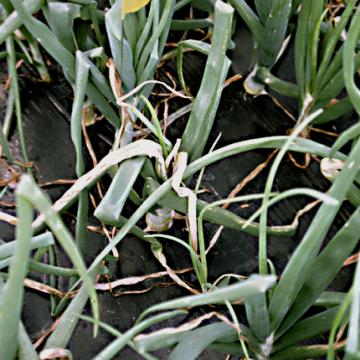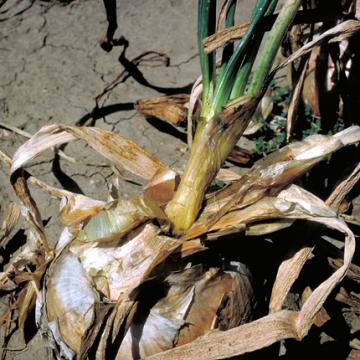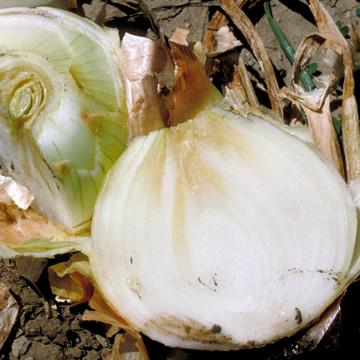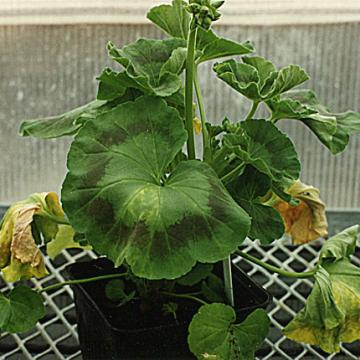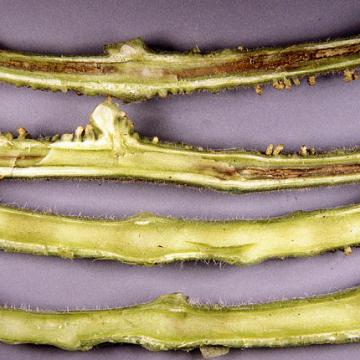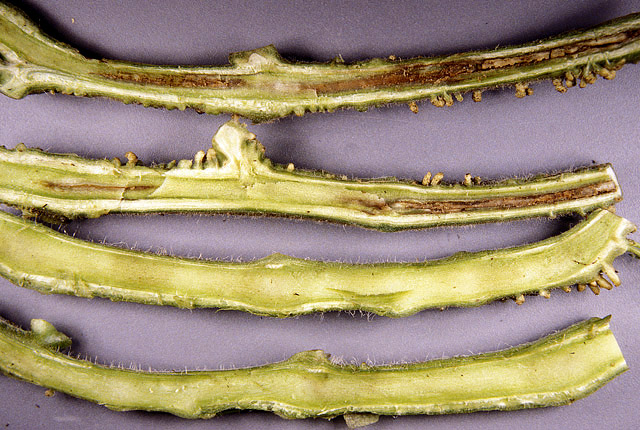DISEASE: Bacterial wilt
HOST: Alfalfa
Longitudinal section of defined brown gum pockets on inner surface of root bark.
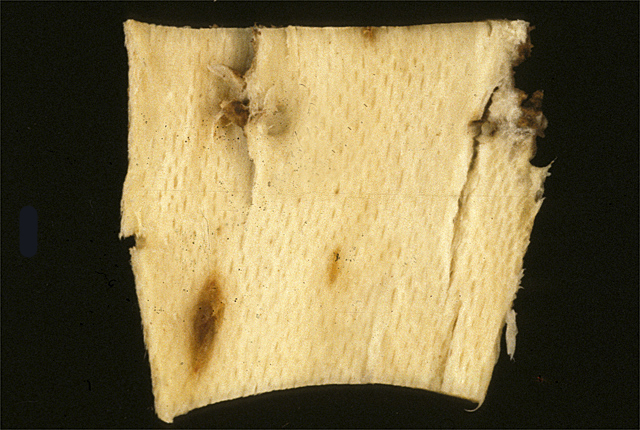
Bacterial wilt | Alfalfa
DISEASE: Bacterial wilt
HOST: Alfalfa (Medicago sativa)
PATHOGEN: Clavibacter michiganensis subsp. insidiosus
SOURCE: S. Thomson
DISEASE: Bacterial wilt
HOST: Alfalfa
Infected plant (left) with typical symptoms of stunting and chlorosis. Other characteristic symptoms are spindly stems and small distorted leaflets. Healthy plant (right).
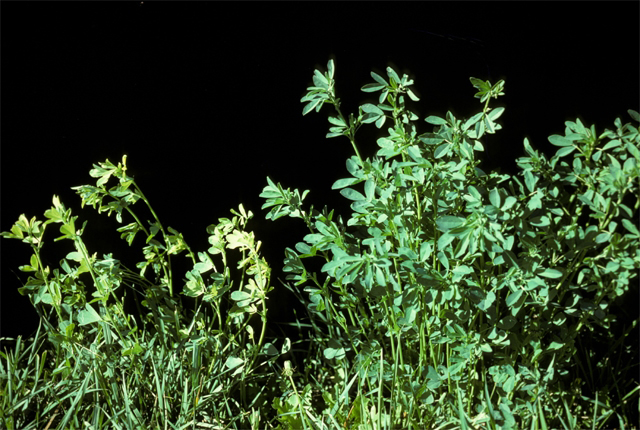
Bacterial wilt | Alfalfa
DISEASE: Bacterial wilt
HOST: Alfalfa (Medicago sativa)
PATHOGEN: Clavibacter michiganensis subsp. insidiosus
SOURCE: S. Thomson
DISEASE: Bacterial wilt
HOST: Alfalfa
Diseased plant with chlorotic leaves.
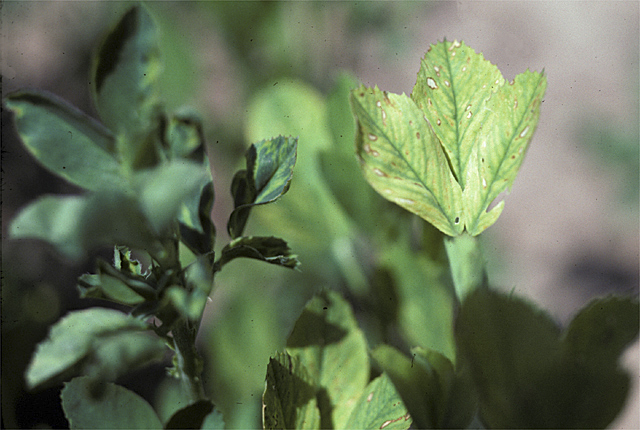
Bacterial wilt | Alfalfa
DISEASE: Bacterial wilt
HOST: Alfalfa (Medicago sativa)
PATHOGEN: Clavibacter michiganensis subsp. insidiosus
SOURCE: S. Thomson
DISEASE: Bacterial wilt
HOST: Alfalfa
Cross sections of diseased roots with defined brown gum pockets on inner surface of bark. Healthy root (upper left). Other sections represent increases in disease severity.
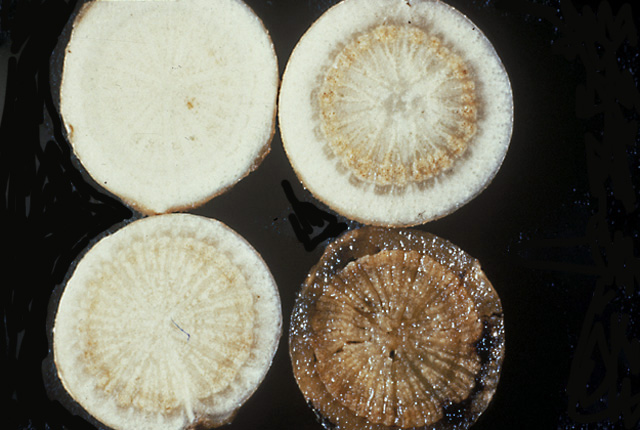
Bacterial wilt | Alfalfa
DISEASE: Bacterial wilt
HOST: Alfalfa (Medicago sativa)
PATHOGEN: Clavibacter michiganensis subsp. insidiosus
SOURCE: L. Claflin
DISEASE: Center rot
HOST: Onion
Early symptoms of disease are necrotic, bleached areas on young leaves that typically wilt.
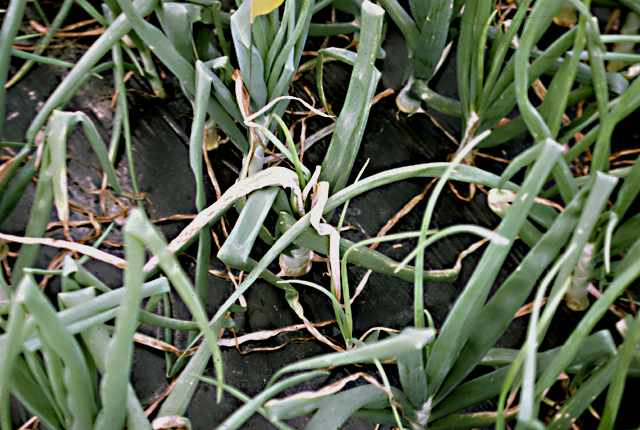
Center rot | Onion
DISEASE: Center rot
HOST: Onion (Allium cepa)
PATHOGEN: Pantoea ananatis
SOURCE: R. Gitaitis
DISEASE: Center rot
HOST: Onion
Advanced stage of center rot. The bacterium has moved down from leaves into the bulb.
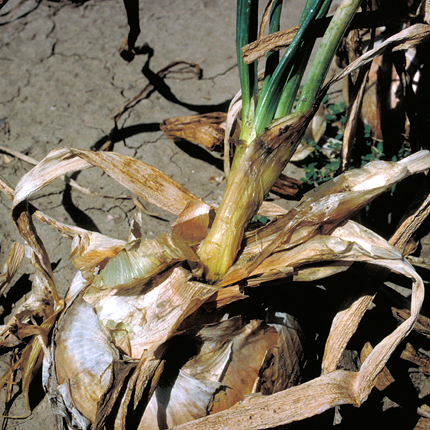
Center rot | Onion
DISEASE: Center rot
HOST: Onion (Allium cepa)
PATHOGEN: Pantoea ananatis
SOURCE: H. Schwartz
DISEASE: Center rot
HOST: Onion
Bulb with pale yellow, discolored decayed area.
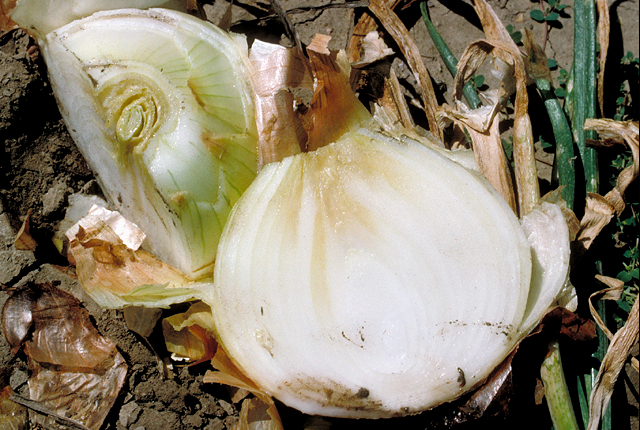
Center rot | Onion
DISEASE: Center rot
HOST: Onion (Allium cepa)
PATHOGEN: Pantoea ananatis
SOURCE: H. Schwartz
DISEASE: Pith necrosis
HOST: Geranium
Geranium with wilted, yellow necrotic leaves.
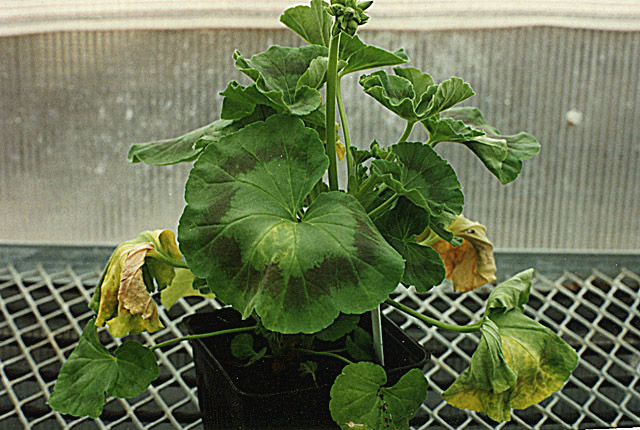
Pith necrosis | Geranium
DISEASE: Pith necrosis
HOST: Geranium (Pelargonium sp.)
PATHOGEN: Pseudomonas corrugata
SOURCE: A. Magyarosy, D. Thomas


